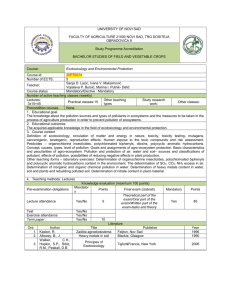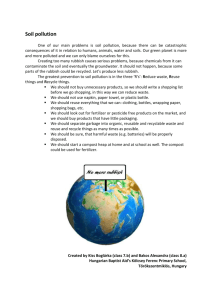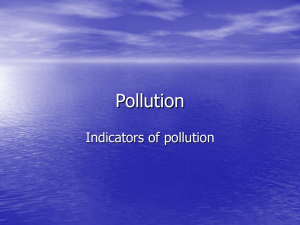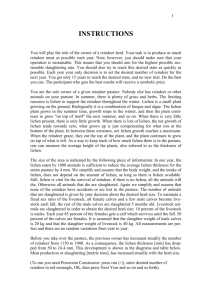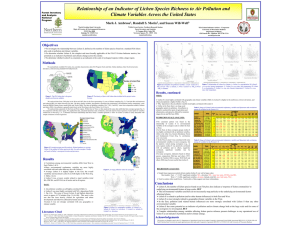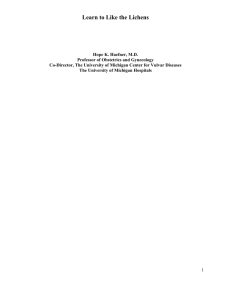An analysis of state/ condition of air
advertisement
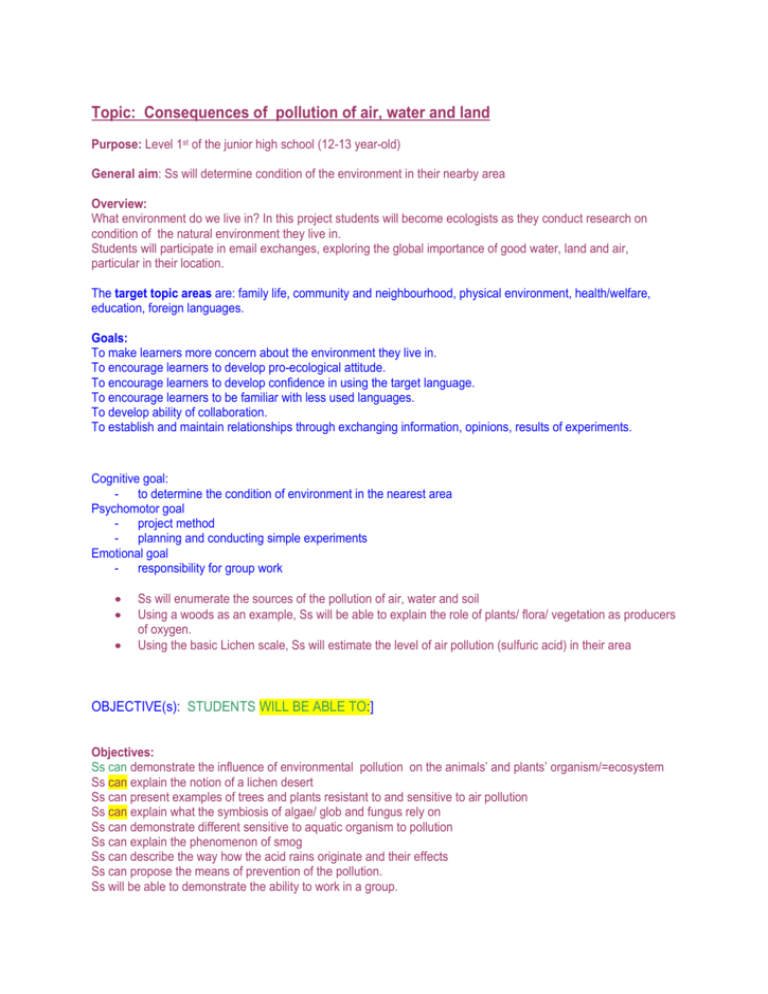
Topic: Consequences of pollution of air, water and land
Purpose: Level 1st of the junior high school (12-13 year-old)
General aim: Ss will determine condition of the environment in their nearby area
Overview:
What environment do we live in? In this project students will become ecologists as they conduct research on
condition of the natural environment they live in.
Students will participate in email exchanges, exploring the global importance of good water, land and air,
particular in their location.
The target topic areas are: family life, community and neighbourhood, physical environment, health/welfare,
education, foreign languages.
Goals:
To make learners more concern about the environment they live in.
To encourage learners to develop pro-ecological attitude.
To encourage learners to develop confidence in using the target language.
To encourage learners to be familiar with less used languages.
To develop ability of collaboration.
To establish and maintain relationships through exchanging information, opinions, results of experiments.
Cognitive goal:
- to determine the condition of environment in the nearest area
Psychomotor goal
- project method
- planning and conducting simple experiments
Emotional goal
- responsibility for group work
Ss will enumerate the sources of the pollution of air, water and soil
Using a woods as an example, Ss will be able to explain the role of plants/ flora/ vegetation as producers
of oxygen.
Using the basic Lichen scale, Ss will estimate the level of air pollution (sulfuric acid) in their area
OBJECTIVE(s): STUDENTS WILL BE ABLE TO:]
Objectives:
Ss can demonstrate the influence of environmental pollution on the animals’ and plants’ organism/=ecosystem
Ss can explain the notion of a lichen desert
Ss can present examples of trees and plants resistant to and sensitive to air pollution
Ss can explain what the symbiosis of algae/ glob and fungus rely on
Ss can demonstrate different sensitive to aquatic organism to pollution
Ss can explain the phenomenon of smog
Ss can describe the way how the acid rains originate and their effects
Ss can propose the means of prevention of the pollution.
Ss will be able to demonstrate the ability to work in a group.
Methods: Group work
Time: one month
Culminating Activity
The culminating activity will be a student-written report which can take form of an exhibition, an album, the Wiki
page, a meeting with a representative of an ecological department or organization.
Materials:
A microscope, hand magnifying glasses, balls of cotton wool/two-sided adhesive tape, test tubes, a lichen scale,
etc
Procedure:
Students are divided into 3 groups. Each group has a task to write a report on the state/ condition of purity of a
chosen element of the natural environment.
Group tasks
Group 1
Topic: Making a report on the state/ condition of water purity.
Tasks:
Making a map of a researched location marking reservoirs
A short characteristic of water
An analysis of purity of water (macroscopic, microscopic, possibly chemical)
An interview with a representative of environmental protection department or an office worker of a
sewage farm.
Writing a report
A presentation
Group 2
Topic: Making a report on the state/ condition of air purity.
Tasks:
Making a map of a researched location
A short characteristic of sources of air pollution
An analysis of the state of air (based on the results of samples of balls of cotton wool in various places,
based on a lichen scale [Hawksworth & Rose qualitative scale for determining air pollution levels.]
based on an observation of trees)
An interview with a representative of environmental protection department
Writing a report
A presentation
Group 3
Topic: Making a report on the state of soil purity.
Tasks:
Making a map of a researched location
A short characteristic concerning sorts of soils and ways of their usage
An examination of state /condition of soil (marking on the map so called “wild landfills”, determining pH
of soil, examining an influence of detergents on the growth and development of plants
An interview with a representative of the biggest “poisoner “ of soil / environmental protection
department
Writing a report
A presentation
=======================================
Procedure {should be written)
An analysis of purity of water (macroscopic, microscopic, possibly chemical)
1. Macroscopic:
a. Determination of the colour of water ( without any equipment – visible to the naked eye)
b. Determination of the smell of water - heating up a sample of water till 30- 40 Celsius degree
/104 Farenheit . The water is heated up in a test tube and then it is examined with organs of
smell. [It can be: 1) without any smell – e.g. distilled water; or it can have 2) smell of plants;
3) putrid / putrefying smell. ]
c. Determination of sediment in the water – pouring water sample through a filter and examining
the residues with the naked eye.
2. Microscopic:
a. Making a specimen of a drop of the examined water and examining it with a number of
microscope magnification. [Learners make drawings of observed organisms.]
3.
Chemical:
a. Determination pH of water using the pH scale.
An analysis of state/ condition of air
1. Observation of samples of cotton wool [swabs] placed in various survey/ measurement places (2,3). [
two-sided adhesive tape can be used to be fixed to leaves or bark of trees]
2. Determination whether lichen1 grows :
a. If there is lack of lichen – the air is strongly polluted with sulfur oxides(SOx)
b. If lichen is observed – it should be determined the species of lichen and a lichen scale should
be applied:
3. Observation of tree-tops, leaves and needles, focusing on:
a. Thinning of top-trees
b. Premature/untimely fall out of leaves
c. Withered part of a top-tree
d. Changes in colours of leaves / needles
e. Mechanical devastation leaves/ needles
f. Release of shoots
An examination of state/ condition of land
1. Determination of soil pH
2. Determination of amount of humus (a profile of soil can be made)
3. Examination the influence of soil to the growth and development of plants [e.g. having grown cress/
cuckooflower /on the dilution of salt, dilution of soap etc. ]
4. Finding “wild landfills” and examining them”;
a. Their size
b. Their composition
c. Taking a photo of them
++++++++++++++++++++++++++++++++++++++++++++
1
Lichen = is a group of tiny plants that look like moss and grow on the surface of things such as rocks, trees, and
walls. WIKIPEDIA!!!
The Internet :
http://www.lichen.com/
http://www.ace.mmu.ac.uk/Resources/Fact_Sheets/Key_Stage_4/Air_Pollution/19.html
http://www.tceq.state.tx.us/assets/public/assistance/education/air/awful8.pdf
http://www.springerlink.com/content/605h7110t67r367x/
Wikipedia
-

